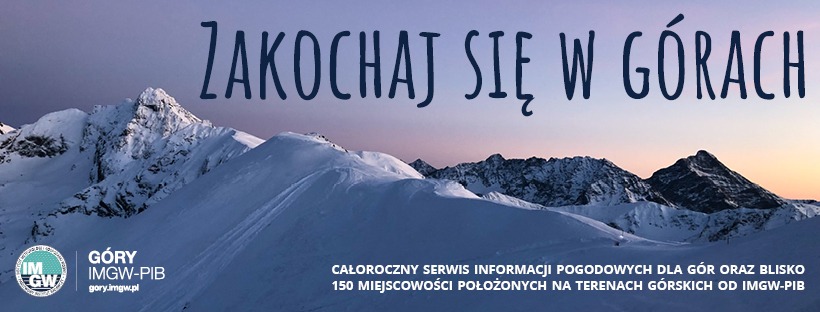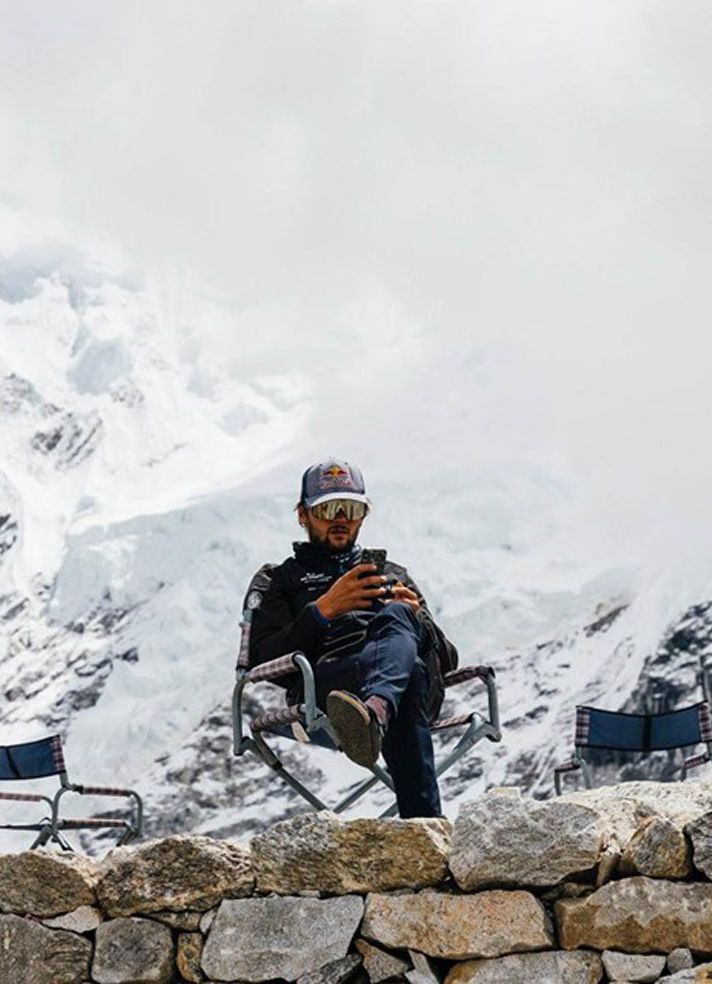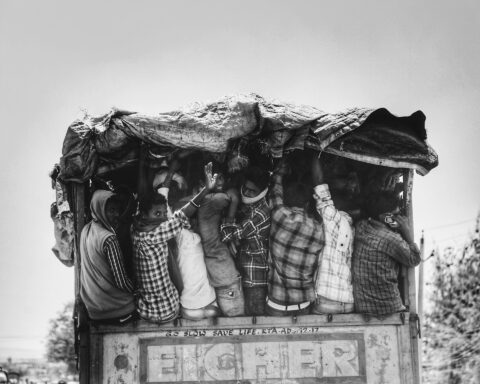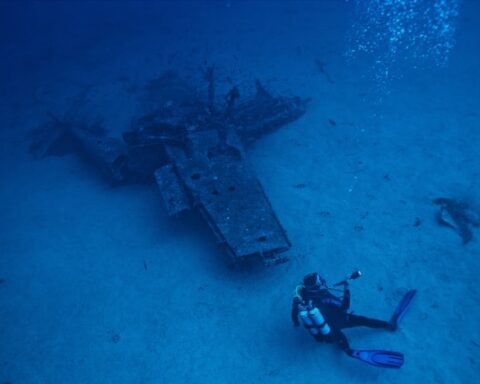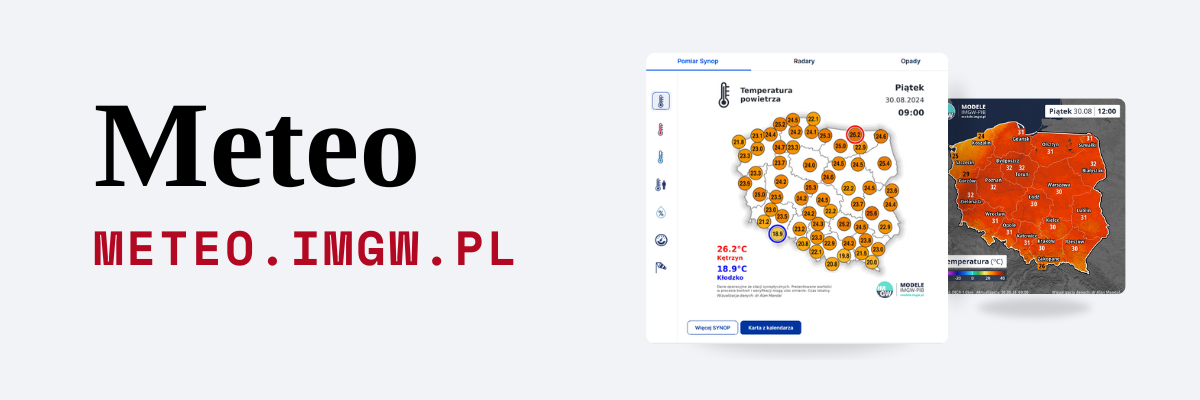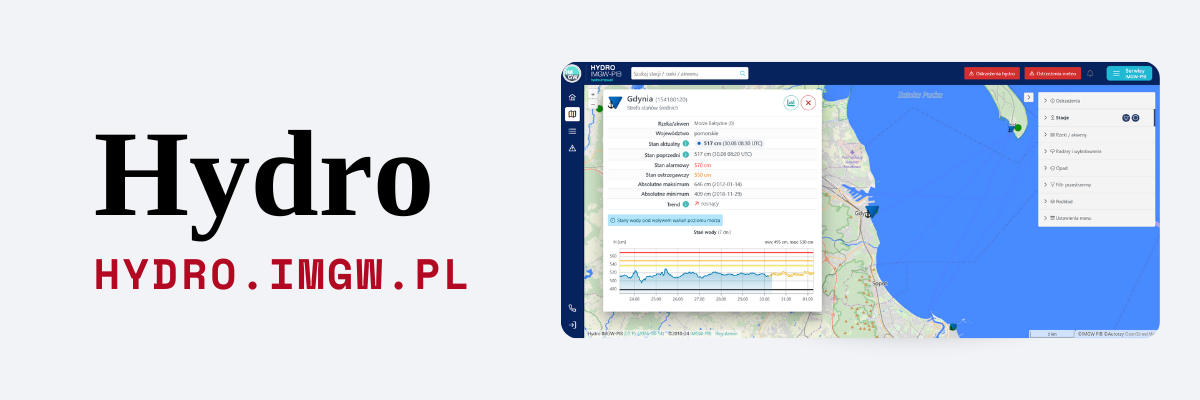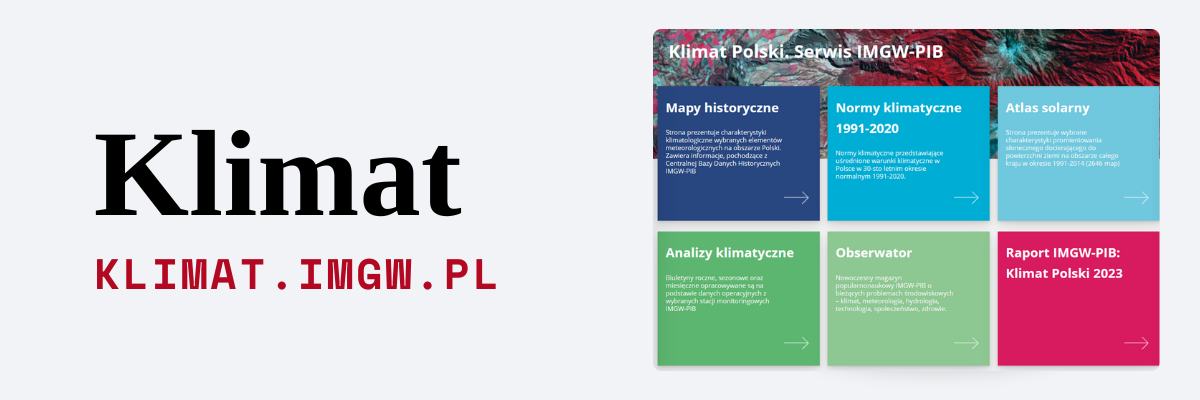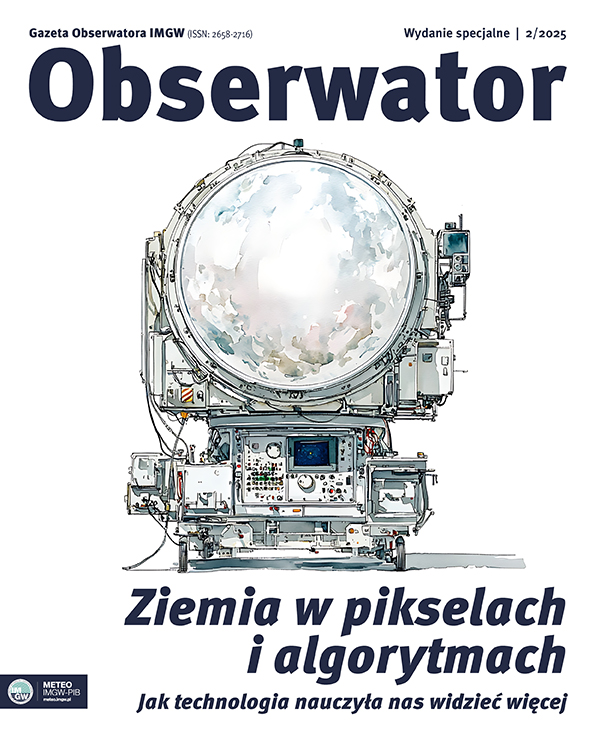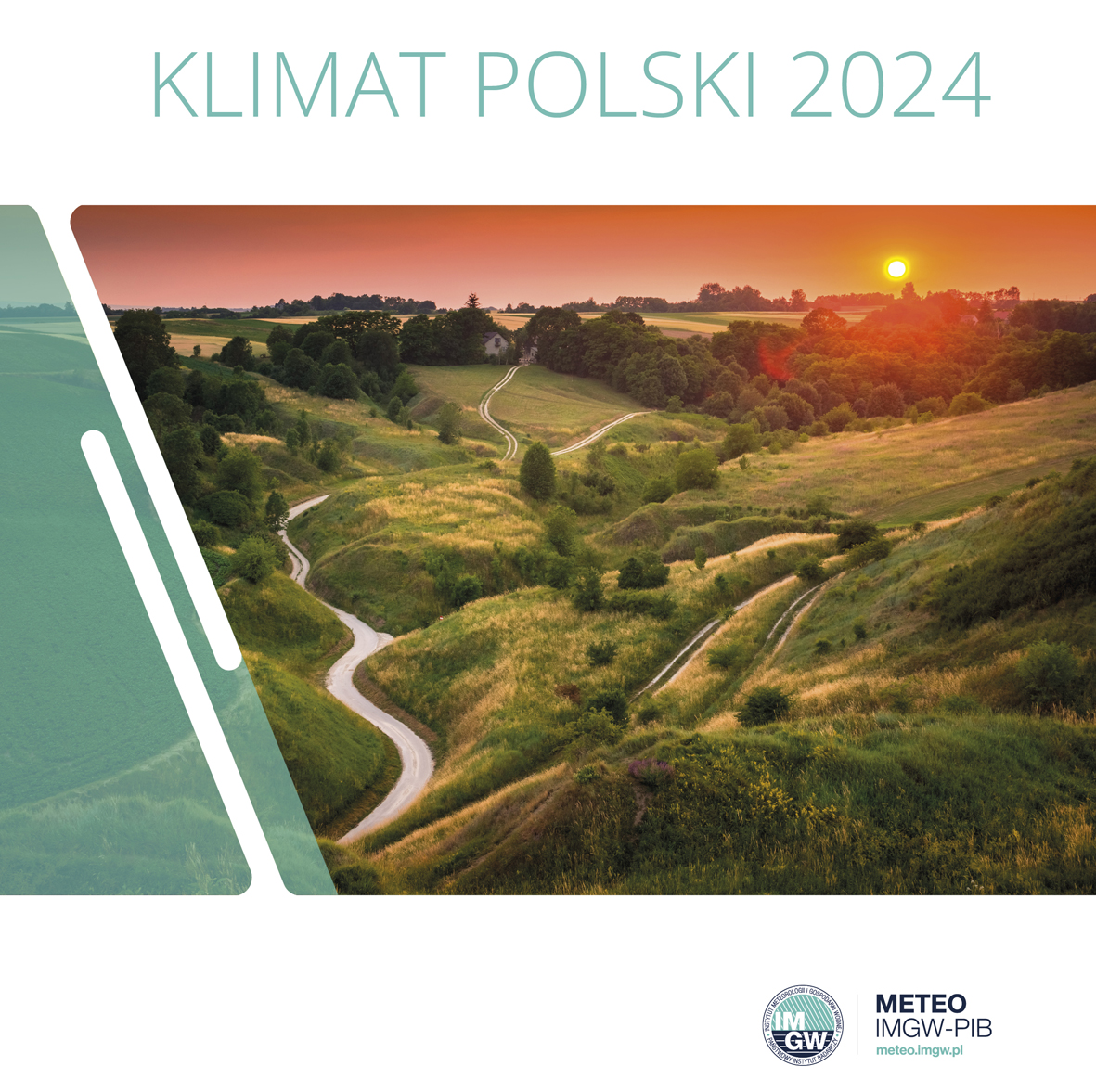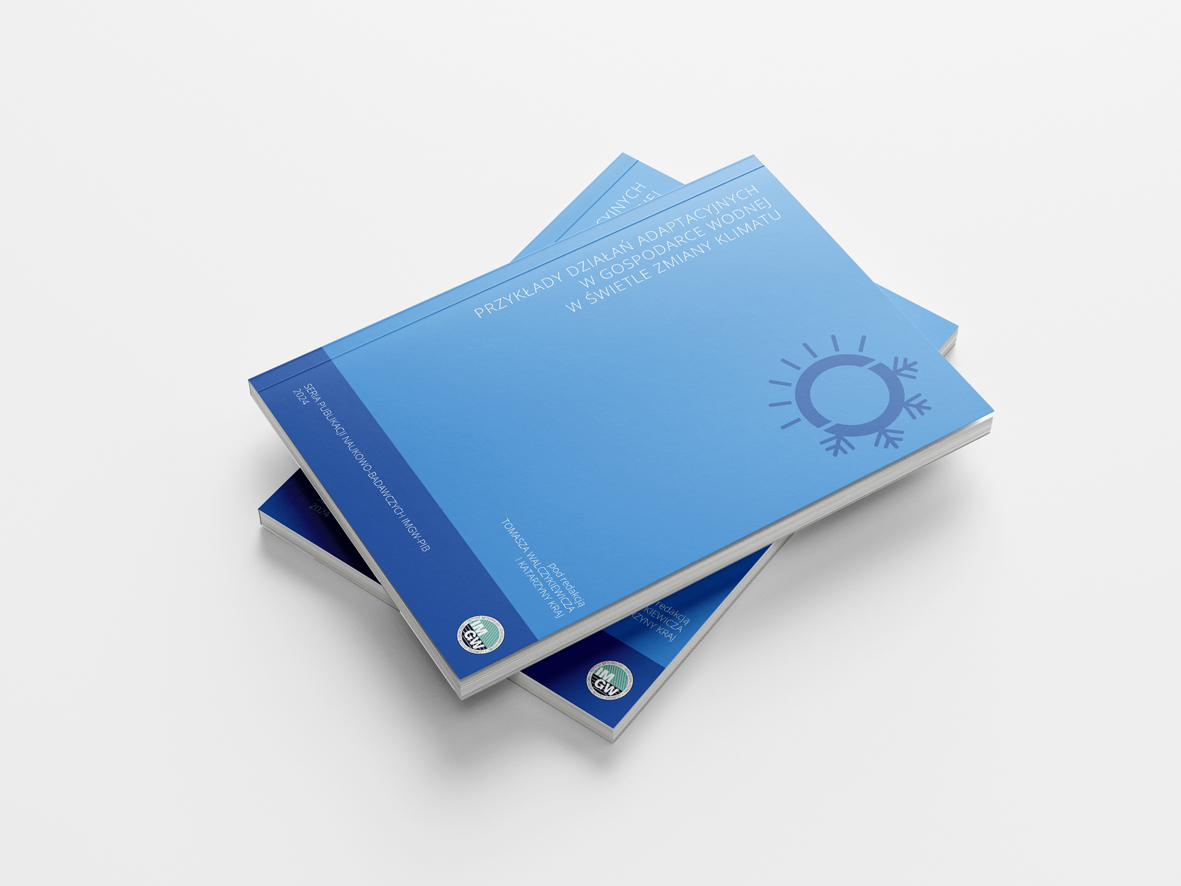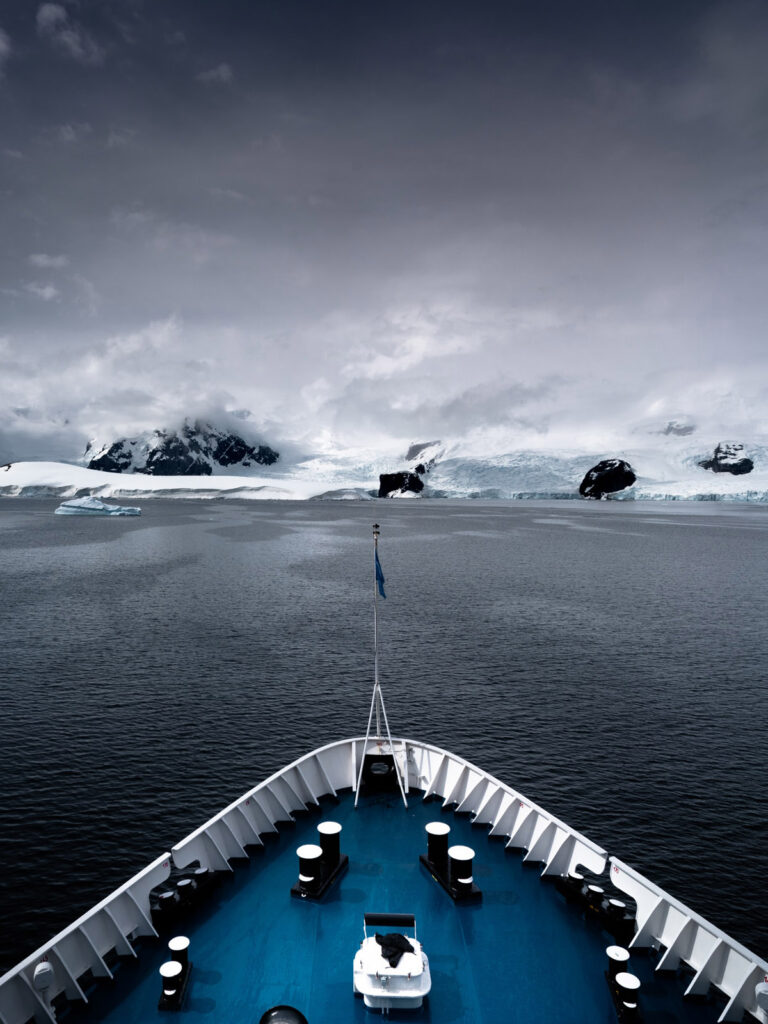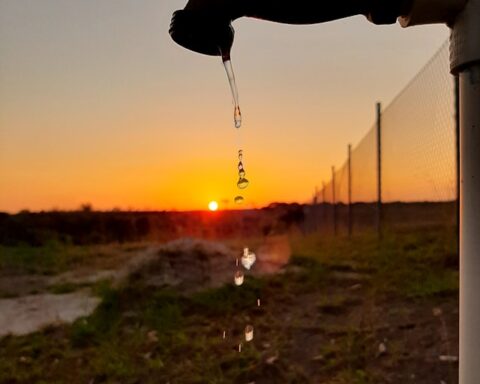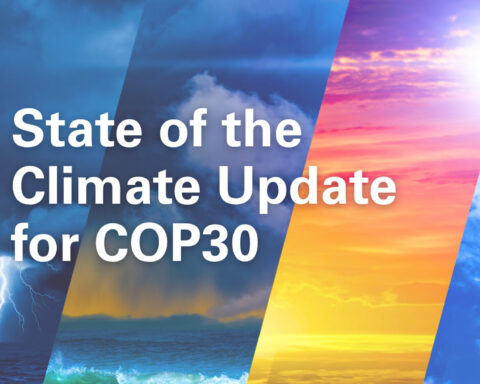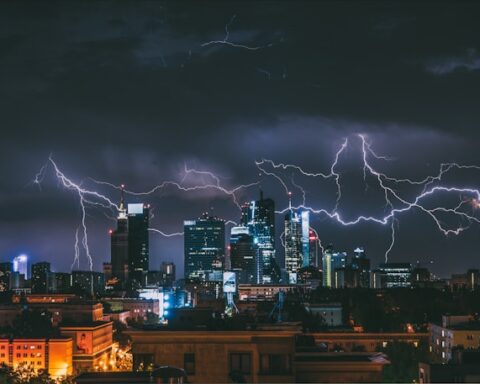Many of us have heard stories about Polish Himalaists and their expeditions. We remember Leszek Cichy, Wanda Rutkiewicz, Jerzy Kukuczka, Piotr Pustelnik, and Maciej Berbeka. Since 2018, the world has been speaking loudly about another Pole – Andrzej Bargiel whose skills, consistency, and wisdom in the mountains are a determinant of new standards.
Rafał Stepnowski from IMGW at the interview with Andrzej Bargiel.
During the expedition in 2019, when Andrzej Bargiel tried to reach Mount Everest and go downhill on skis, IMGW-PIB was a partner supporting the team, providing messages, warnings and satellite photo analysis. In 2020, IMGW-PIB launched a forecast service in Polish mountain ranges for the whole year, so that for the love of the mountains everyone could feel as safe as possible. On this occasion, we talked with the titled Polish mountaineer about the challenges, winter, climate, and weather in the Tatra Mountains.
Rafał Stepnowski: When you think about the Tatra Mountains winter landscape, what do you see?
Andrzej Bargiel: Kasprowy Wierch. It is an iconic mountain for skiers, around which the whole community is focused. All the holidays, events that are important for us, meetings are held there. I feel good there, especially skiing in the winter. Besides, it is the only place in Poland where you can practice real alpine skiing.
Are there places in the Polish mountains that you consider particularly dangerous in winter?
AB: In general, mountain activity is related to the awareness of hazards and the experience of moving in the mountains. The main dangers are icy trails and avalanches. Information about threats is very important because it gives us an answer to where we can go at a given moment. And based on these premises, it is possible to plan an exit to the area. Check TOPR messages, weather forecasts – this will allow us to choose a place and time. The weather in the mountains can be extremely difficult. The Tatra Mountains are demanding if we move above the height of shelters, especially when there is avalanche danger.
What extreme weather conditions did you encounter in the Tatra Mountains in the winter?
AB: Certainly, the wind which in the Tatras is often strong, gusty and changeable. There were situations where it did not allow to stand on feet. Another issue is the heavy snowfall, which limits the orientation in the field. As a young man, I had such a situation that being in the mountains with avalanche risk level 5 and snowstorm, I came across Slovakia blindly (laughter). Of course, we should not forget the storms that are extremely severe in the mountains, especially in the spring. These are phenomena for which there is no simple remedy. When we are in the mountains during a storm, we have few options to improve our position. Sudden changes in temperature, especially in summer, are also a challenge. Often on a warm day, hail comes and the air temperature drops rapidly by a dozen degrees.
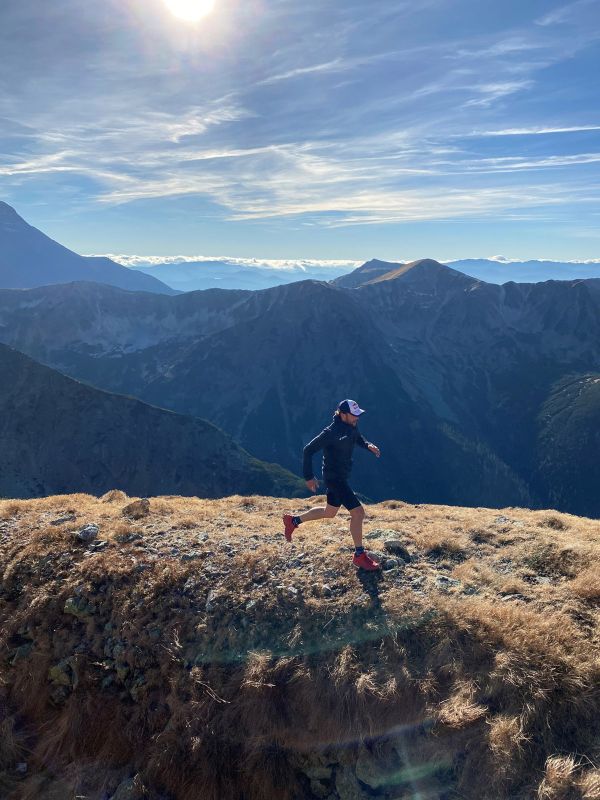
What are the three golden rules for moving around the Tatras in winter?
AB: Planning! We need to check weather, avalanche messages, TOPR information on the conditions on the trails. This will allow us to verify the objectives we are setting ourselves. Another issue is the selection of equipment for the area where we want to move. Spare gloves, a cap, warm rain clothes, windproof clothes, first aid kit – these are the basics. Nowadays, the essential tool is navigation and a charged phone with a rescue application that allows you to send a quick and precise message to emergency services. It is very important to observe the time during the expedition. We leave early in the morning, dusk is the enemy in the mountains in the winter. And the most important thing before we leave, let’s inform others about our plans: where we go, what is our destination, what time we plan to get there. This can save our lives because we never know for sure whether or not something unexpected will happen that will limit our ability to call for help. Then such a person will help rescuers determine our potential whereabouts.
In the summer, we are bombing in the media with images of tourists conquering Giewont in flip-flops, sandals, or high heels. What are the greatest sins of Poles in the mountains in winter?
AB: There is a lack of education, from an early age – how to prepare for mountain activities. Understandably, someone who is in the mountains for the first time is not completely aware of many dangers. This, in turn, creates dangerous situations. People set themselves ambitious targets, and they cannot even choose clothing, shoes, or equipment properly. It should be remembered that in winter, climbing any summit should be done with ice axes, crampons, and a helmet. The avalanche rescue kit should be an indispensable part of the equipment. This is not just about our own security, but we can find ourselves in a situation where we have to help others.
Having so much experience as a TOPR rescuer, a Himalaist, a skier, can you predict the weather in the mountains? Do you use forecasts?
AB: If these are long climbing expeditions, of course, I use forecasts. Then many factors are crucial to me. Whether the snow is hard or the air temperature will not rise suddenly, I see how precipitation and wind conditions change. However, when I go for quick training and the weather is stable, then I do not analyze the forecasts carefully, although of course, I check the basic information. It is also a question of experience, the more often you are in the mountains, the better you understand the conditions there, the faster you respond to changes. Nature gives signals.
Is it possible to avoid weather surprises in the mountains? Are the Tatras, in terms of weather, no longer a challenge for you?
AB: We can estimate to a large extent what will happen in 30-60 minutes, but that is not a certainty. The ability to predict is extremely helpful, because it allows you to react quickly to changing conditions during activity, but… I think that knowing a professional forecast is always advisable. We shouldn’t be too sure because the mountains are unpredictable. The weather can change faster than we assume, just like that.

Do you notice climate change in the Polish mountains? Can you imagine mountains without snow?
AB: Yes, I see the changes. I grew up in a village where you went skiing regularly for three months. Today snow appears there for 2-3 weeks a year. I see these changes, above all, during the expeditions to the Alps. It has a huge impact on what I do – the level of threat. I had situations when it was raining to a height of 7,000 meters. The recent expedition to Mount Everest is a good example of this. During the monsoon period, at an altitude of over 5,000 meters, it normally snows about 20 meters, and this year it rained only. This causes the Himalayan glaciers to become unstable, washed out. While climbing, we came across a huge piece of ice that broke away from the main glacier. We saw that it was moving and could fall at any time. So we had to quit and get down. This lack of snow and the changes high up in the mountains worries me a lot.
Would you like to get anything else in the Tatras? Do you see the challenges for yourself?
AB: Certainly, there is still much to be discovered in the Tatra Mountains. Pave new paths on the walls. I am very pleased with this time when I am in the Polish mountains. They are not high, but the conditions that prevail here, the terrain are still a challenge. And it gives me great satisfaction when I can go home after all the day on the trails.
So is there a chance that Andrzej Bargiel will still appear in the Tatras?
AB: Possible (laugh). Besides, I live in the Tatra National Park. I feel a part of this place, I feel good here and I’m not going anywhere.
The last question. We know what problems we are facing now, the COVID-19 pandemic is limiting our activity. But the ski season is approaching and probably many fans of white madness are planning to spend at least a few days in the mountains. Are you, as TOPR, ready for this specific time?
AB: I am not a professional TOPR, I support my colleagues as a volunteer. However, TOPR is certainly prepared. It is one of the best mountain rescue services in the world, well organized, ready for action all the time. There are people from here, from Podhale, who know the mountains, they feel them, so they are always in the best condition.
Thank you for the interview. It was a pleasure. We only wish you good weather and see you in the mountains.
Andrzej Bargiel (born 1988), alpine skiing, three-time Polish champion in alpine skiing.
In 2010, he set a new world record in the Elbrus race, which was broken only this year, after repeated attempts by a veteran of this race – Vitalij Szkieł. In 2012, Andrzej set out in the Himalayas for the first time. He was one of the participants of the unification expedition of the Polish Alpine Association, organized as a part of the „Polish Winter Himalaism 2010-2015 program. On October 2, 2013, Andrzej reached the summit of Shishapangma (8013 m above sea level) alone and became the first Pole, who went down from this peak to its base without removing skis. In 2014, he added two more records to his successes on Manaslu (8156 meters above sea level), reaching the summit in record time – 14 hours 15 minutes – and skiing from the summit to a height that no one had ever achieved before, breaking a base-peak-base style time record (it took him 21 hours and 14 minutes to get from the base to the Manaslu peak and back.) A year later, he stood on the top of Broad Peak (8,051 m above sea level), and then as the first man in history, he skied down from this peak to the base. Bargiel’s ascent to the summit took eight hours, and the descent three hours. At the turn of July and August 2016, his list of accomplishments was extended by the record time of reaching the five highest summits of the former USSR, the so-called Snow Panther. Andrzej achieved all the peaks in 30 days, thus breaking the record set in 1999 by Denis Urubko and Andrei Molotov. He skied partly or entirely of all the summits. In 2018, he made a historic achievement by reaching the summit of K2 (8,611 meters above sea level) and as the first in history, skiing from the top of this extremely difficult and technically demanding mountain to the base without taking them off. No man in the world had ever managed to do before.
Honored with the Golden Cross of Merit for the promotion of Poland and the development of Polish mountaineering, Man of the Year 2015 Award by the National Geographic Traveler magazine, the international title of National Geographic Adventurer of the Year 2019, awarded the Kolos (2016, 2018) in the category of mountaineering, and in 2018 he was among the top ten Polish athletes (Przegląd Sportowy). Through its pioneering project, Hic Sunt Leones tries to achieve goals in a style that no one in the world has ever attempted. Fast peak attacks and descent from the peaks to the base of the mountain without the use of oxygen are certainly achievements that will go down in the history of global Himalayanism and Alpine skiing.
Foto: Kuba Poburka, Marek Ogień, IMGW Archives.
